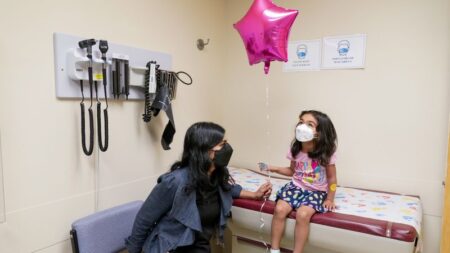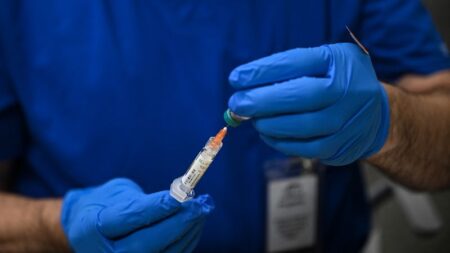As the world grapples with rising cases of poultry infections, there is growing concern surrounding avian influenza, commonly known as bird flu, and its potential impact on human health. The emergence of these cases, especially in dairy cattle and chickens, has led to fears that the virus may pose a threat to humans. The crucial question remains: Are we at risk due to the recent uptick in infections?
Bird flu infections in humans are infrequent, with the Centers for Disease Control and Prevention (CDC) reporting sixty-one confirmed cases in the United States for the current year. Notably, the majority of these cases have involved individuals who work in direct contact with poultry or dairy farms, highlighting the occupational risks linked to the virus.
Avian influenza, as the name suggests, primarily targets birds. The viruses penetrate bird cells by attaching themselves to specific sugars known as sialic acids found on the surface of these cells. The H5N1 strain, responsible for the ongoing outbreak in the U.S., has predominantly shown a preference for the receptors that abound in the respiratory systems of birds.
However, one of the defining characteristics of flu viruses is their ability to mutate rapidly. Since 2022, the H5N1 strain has increasingly been observed infecting a broader range of mammals, including dairy cattle. This is alarming for scientists, as greater circulation of the virus among animals could lead to enhanced transmissibility and the potential for finding new hosts, raising the prospect of human infection.
A recent study published in the journal Science has shed light on the virus’s adaptability. Researchers discovered that even a minor alteration in its genetic structure could enable H5N1 to latch onto sialic acid receptors present largely in human respiratory tracts. Despite this concerning finding, predicting when, or if, such a change will occur remains virtually impossible.
Historically, when humans contract bird flu, it’s often through direct contact with infected animals. Fortunately, most recorded instances have been mild. However, a critical case was reported in Louisiana this week, marking the first severe incident in the U.S. The affected individual is currently hospitalized in critical condition after exposure to sick and deceased birds on private property, emphasizing that even non-commercial poultry can be a source of transmission.
The CDC has indicated that no known cases of H5N1 transmission from humans to humans have been reported, suggesting that the risk to the general public remains low. That said, certain occupations and scenarios elevate the risk of contracting bird flu, notably among farm workers and those who keep backyard flocks. Professor Michael Osterholm from the University of Minnesota notes that the manner of virus transmission is significant; birds shed the virus through bodily fluids, which can become aerosolized during culling operations or when feathers and litter are disturbed.
The implications for dairy workers are particularly noteworthy, as studies have cited high concentrations of the bird flu virus in raw or unpasteurized milk. In milking parlors, droplets containing the virus can easily become airborne or land on workers, especially if protective measures are not adhered to. Symptoms among infected individuals predominantly include red or irritated eyes, indicating a potential linkage to the receptors present in human eyes, akin to those found in birds.
The issue of raw milk consumption cannot be overlooked. Cats and calves have reportedly contracted infections after exposure to contaminated milk, while the CDC indicates that no definitive human cases of bird flu have been traced to raw milk. However, the risks associated with raw milk are well-documented, including other harmful pathogens like E. coli and salmonella. Pasteurization remains the most effective method to eliminate these threats, including H5N1, whereas refrigeration does not guarantee that the virus will be eradicated.
To safeguard against bird flu, the CDC advises minimizing exposure by avoiding interaction with sick or deceased animals and diligently practicing hygiene protocols like wearing personal protective equipment when handling infected wildlife. Given the risks raw milk poses, experts advocate for consuming pasteurized products instead.
In conclusion, while the threat of bird flu remains a pertinent concern, particularly among individuals working directly with poultry and dairy cattle, appropriate precautions can mitigate risks. Staying informed through reliable sources and adhering to recommended health guidelines are essential steps toward public safety.












